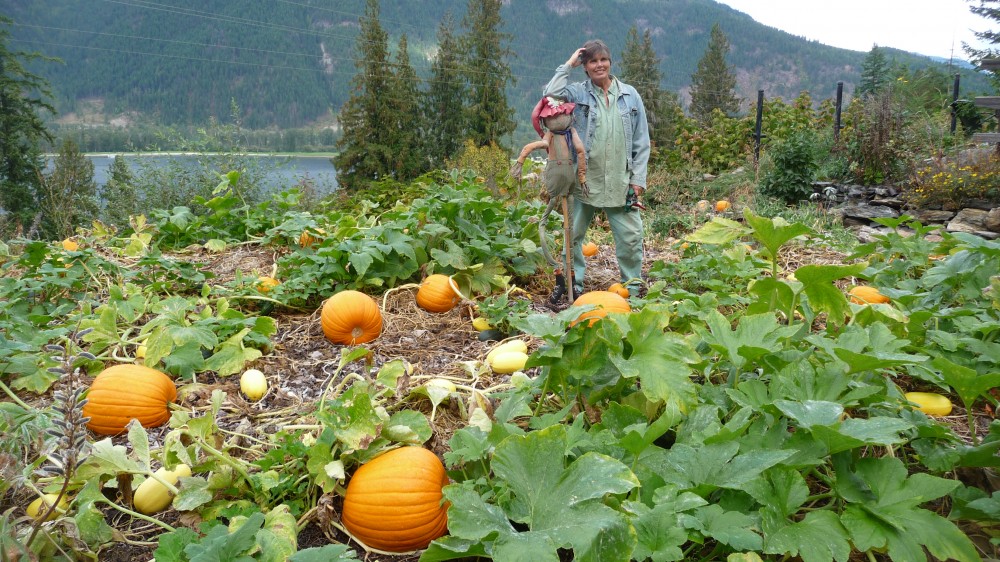Throw me on the compost heap
My old Nan used to say
No fancy funeral for me
When I pass away
They are a waste of money
A complete waste of time
I don’t want you wasting money on funerals
Especially if it’s mine
Just put me in a bin bag
Or maybe some old sack
Tie it up with a piece of string
And throw me out the back
Indeed, she did end up out the back
Helping the daffodils grow
Though we did have her cremated first
I’m sure you’ll be relieved to know!
(True story by Gary Wayne Hill)
Any time now those wonderful, nutritious leaves are going to start falling to the ground and you’ll want to grab them! These varied-shaped gifts that flutter to the ground every year are far too precious to burn, and those smoky fires always haze up our beautiful blue fall skies, let alone create breathing problems for other people. If you or your neighbours make this an annual ritual, try this instead: give them away to a thankful gardener, stick them in a vacant lot for others to use, spread them out onto a forest floor, rake them under your trees and shrubs or better yet, start your own compost pile with them!
At the Gaia College, we were taught to gather as many varieties of materials of greens and browns as possible and put them aside until we had enough to make a layered pile in one quick step. This will give you a rich soil blend for next years’ gardening season that will provide the necessary nutrients and organic material for your soil food web. Start stockpiling kitchen scraps, grass clippings, leaves, manures, wood chips, forest litter, plant cuttings (get a garden chipper if you can), straw, old hay and whatever else you can find until you have enough materials to fill at least one 4 x 4 x 4’ bin. Once you’re ready then start layering, beginning with the courser materials at the bottom. The ratio should be more browns (carbon-rich) than greens (nitrogen-rich) and make sure you have enough moisture (not soaked) between the layers – especially the grass – or it’ll have dry areas and therefore won’t decompose properly. Create as much compost as you can, because you can always use extra soil to fill holes and create new gardens. A diversified mixture of nutrients in your finished compost will always be your best soil amendment and plant fertilizer and it’s cost nothing but a little labour and time.
Leaves are those in-between items that are both green and brown, but they’re generally considered to be in the brown category. If you can, get a leaf shredder or run over them with a lawn mower first in order to prevent matting from full-sized leaves sticking together. To increase the mineral content, get your hands on some rock dust or a little sand to sprinkle in between the layers. A microbe solution (order them through The Organic Gardeners Pantry or make your own culture), will speed up the decomposing process and also provide additional nutrients that will enhance your soil ecology. Then cover it up with a tarp or lid so the rain and snow won’t wash away the nutrients. It’ll start cooking immediately until it starts to freeze. The worm and microbe activity will then slow down during the long winter months, but they’ll kick into gear again in the spring when it starts to warm up. Composting doesn’t have to be a science, so don’t ever fret about whether you’re doing it properly or not. Just try to have a variety of materials with enough moisture between the layers and that’s basically it.
Ideally, you’ll want to have at least 2 big composts going all year – one for spring and one for the fall – in order provide your plants with the necessary energy and nutrient requirements for these two key garden seasons. In the spring, plants need good soil to start growing, but plants also prepare for winter by beefing up their root systems and this takes energy. So first, make sure your soil is well watered in order to prevent freeze-dried roots, which could damage or kill the plants, and the next step is to put a good layer (2 – 4”) of compost or a healthy mulch on the soil surface for the plants to use now. This will also protect the soil surface, as well as your micro and macro life forms, from the harsh weather conditions to come. Happy composting!
